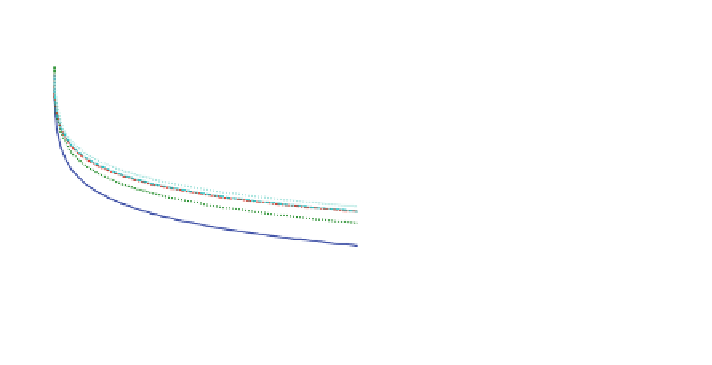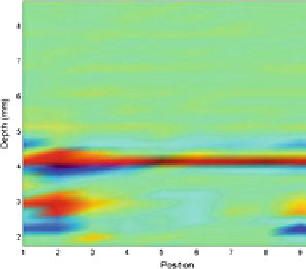Information Technology Reference
In-Depth Information
(a)
10
3
(b)
Interference freq. =1MHz
Interference freq. =2MHz
Interference freq. =3MHz
Interference freq. =4MHz
Interference freq. =4.5MHz
10
2
10
1
10
0
10
-1
0
10
20
30
40
50
60
70
P
Interference
/P
Signal
Fig. 6.12 a Error percentage vs. Pinterference/Psignal ratio; b Enhanced centroid frequency
B-Scan with cancelled interferences
The results obtained from the Basilica's dome inspection were validated by
testing in an architectonic scale model replica. In addition, some material samples
were extracted from the replica and measured in the lab to obtain an accurate
calculation of material wave propagation.
6.3 Conclusions
In this chapter, two applications of the proposed methods to NDT have been
presented. In the first application, we obtained the results of applying the Mixca
procedure to a challenging application in the area of non-destructive testing of
materials: the classification of archaeological ceramic pieces into different historic
periods. We have demonstrated the interest of using methods that are able to
consider non-gaussian models of the underlying probability densities in the feature
vector space. Thus, the Mixca algorithm was tested using different variants
depending on the embedded ICA algorithm. Mixca has the additional merit of
allowing PSS labelling, which is of practical interest in the considered application.
Note that in any Mixca variant, the mutual dependence among features is modelled
in a parametric form; also note that in non-parametric Mixca, the estimated
marginals are non-parametric. This confirms that non-parametric Mixca shares the
good general modelling capability of non-parametric classifiers and can also work
with a training set of relatively small size, which is a relevant property of para-
metric techniques. This explains why Mixca has shown the best results and is able
to produce acceptable performance for even low ratios of PSS.
The experiments show promising results in defining a standardized method that
could complement or replace destructive, costly, and time-consuming techniques,
which are currently being used by archaeologists in the area of ceramic charac-
terization. Extensions of the procedures presented in this work to other emergent
material applications are planned for future work.





























































































































































































Search WWH ::

Custom Search